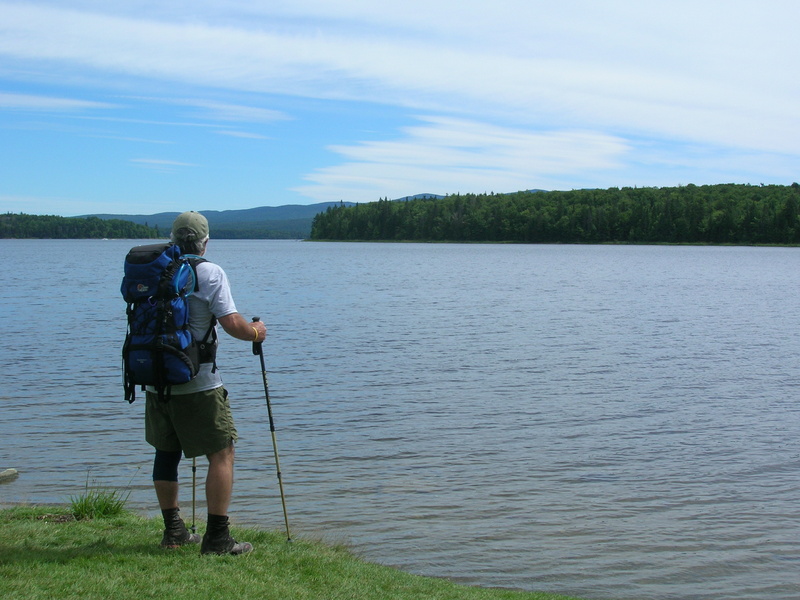Three and a half years ago the Cohos Trail, the third longest hiking trail in New England, nearly went defunct. In a notice to supporters, founder Kim Nilsen announced that the Cohos Trail Association would be disbanded and the 162-mile trail system, spanning the length of Coos County in New Hampshire, would be closed.
I remember reading the statement with disbelief and wondering how a trail project of such magnitude could go belly up just six years into existence? But the answer was simple: Lack of financial support and volunteers to keep the trail maintained and open, and to build necessary facilities such as shelters and bog bridging.
The reality was stark: Like any trail, the Cohos Trail needed money and people, and without these critical elements it could not survive.
End of story, right? Not quite.
A few months later I received an equally surprising message from Nilsen: “The Cohos Trail lives. We have reorganized the association and have some new volunteer blood. In fact, the notice of closure brought a storm of support from people who are in a position to make sure it doesn’t close down again. So we will reopen the trail in 2007 and will actually be expanding it another six or so miles and adding at least one cleared summit with a jaw-dropping view.”
The turnaround of the Cohos Trail was fast and real and is a heart-warming story of the rebirth of an important regional recreation asset.
“Now we have people in place that can husband this big trail and make it one of the premier hiking trails in the eastern United States,” said Nilsen. “It has always had that potential, but it needed dedicated local people to come forward to take on the effort. They came forward. Now the Cohos Trail can go forward in their hands.”
Under the leadership of Pete and Lainie Castine of Pittsburg, N.H., and the tireless dedication and solid support of dozens of others, the trail has not only endured but thrived, and the route is now on the verge of completion.
This summer, a trail crew and a host of volunteers will set out to build and open 15 miles of new trail in the Connecticut River headwaters region, from what’s locally known as Happy Corner north to the Canadian border. The work will move the route into the backwoods and eliminate miles of walking on gravel and paved roads.
Preparations for the new corridor are nearly complete, including fundraising, cost estimates, permits, and calls for volunteers and materials.
“Things definitely are coming together quickly now,” Nilsen said.
The state of New Hampshire has adopted the Cohos Trail as part of its land-use development strategy and negotiated easements on lands in Pittsburg. And private landowners are now more amenable to multiple-use activity than ever before. These developments have combined to make completion of the trail finally possible.
summer’s end, hikers and backpackers should be able to enjoy “new, rarely visited North Country summits with exceptional views, a roaring flume and falls, a number of the large Connecticut Lakes, plus several private and state campgrounds, lodges and cabin clusters.”
A completed Cohos Trail will provide the Coos County region with a new, nonmotorized recreation infrastructure that will complement the existing ATV and snowmobile trail network.
“There has never been a hiking culture here,” said Nilsen. “But now people are recognizing that hiking is an important part of the recreation mix.”
There are potentially significant economic benefits as well. Given that 2,000,000 hikers visit the nearby White Mountains annually, Nilsen hopes that a finished and well-publicized Cohos Trail will entice a fraction of those outdoor enthusiasts to come north, explore and stay.
“If they’re like me they’ll spend money on gas, food, a restaurant meal, a motel at the end of a long tramp,” Nilsen said. “They’ll need gear, supplies, a beer, some fun, a hot shower.
“Their dollars will be incremental, but they will be new to the economic mix.”
The Cohos Trail is a success story unto itself, but there’s more. The completed trail will officially link to the Sentiers Frontaliers, or Border Trails, at Chartierville, Quebec. From that point, the Sentiers Frontaliers continues along the rugged Canada-New Hampshire-Maine boundary for 55 miles, ending at the customs station at Woburn, Quebec, and Coburn Gore, Maine. This makes for the second international trail connection in New England, along with the International Appalachian Trail that extends from Mount Katahdin to Newfoundland.
For more information on hiking and helping out on the Cohos Trail, visit www.cohostrail.org.
Carey Kish of Bowdoin thru-hiked the Cohos Trail in 2007 and the Sentiers Frontaliers in 2009. Comments are welcome at:
MaineOutdoors@aol.com
Send questions/comments to the editors.



Success. Please wait for the page to reload. If the page does not reload within 5 seconds, please refresh the page.
Enter your email and password to access comments.
Hi, to comment on stories you must . This profile is in addition to your subscription and website login.
Already have a commenting profile? .
Invalid username/password.
Please check your email to confirm and complete your registration.
Only subscribers are eligible to post comments. Please subscribe or login first for digital access. Here’s why.
Use the form below to reset your password. When you've submitted your account email, we will send an email with a reset code.